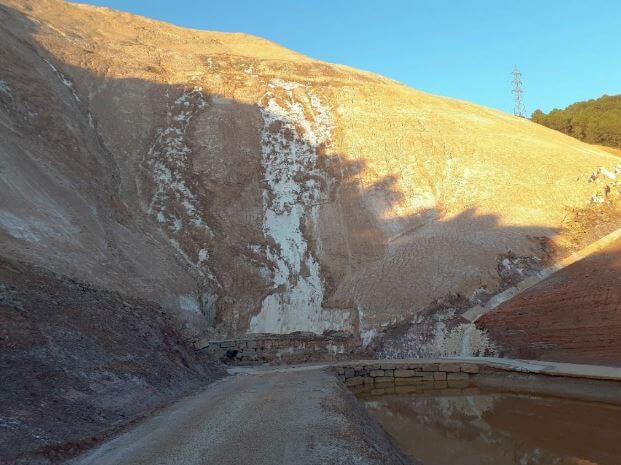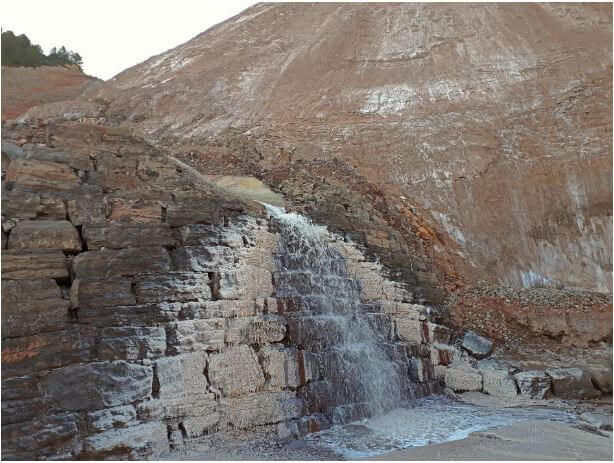Next Topic
Select SDGs to find out how we are taking action in support of the UN Substinable Development Goals
2022 ISRAEL CHEMICALS LTD. | ALL RIGHTS RESERVED


Sallent’s salt deposits
The El Cogulló salt deposit was opened in 1977 in order to store excess salt resulting from potash extraction at the Vilafruns mine. It was in use by companies that operated the mine prior to ICL Iberia. On June 30, 2019, the deposit was shut down and ICL Iberia has taken the first steps in the restoration process.
ICL Iberia has taken the first steps in the restoration process, as part of its commitment to pursue more sustainable mining.
La Botjosa is a mining colony built in the 1930’s just off the Sallent plant to house the families working at the mine. Adjacent to it is a salt deposit of the same name which was used to store salt from potash extraction prior to the opening of the Cogulló.
The deposit has been inactive since the early 1970’s, when the state-owned company Potasas Ibéricas closed it permanently. Without making any use of it, ICL Iberia has committed to restore the deposit, and in recent years, a series of preventive measures and environmental management have been carried out. During 2019 the Company conducted surveys in the deposit as part of its restoration plan and in 2020 began conducting tests on the ground.
The restoration process
In April 2011, ICL Iberia announced the Phoenix Plan for the reactivation of the Bages mining basin. The plan aims to reach full economic, social and environmental sustainability of Bages mining activity, while gradually transferring production from the Vilafruns mine (Sallent) to the Cabanasses mine (Súria).
A multi‑year program is currently underway to restore ICL Iberia’s salt deposits, concentrating efforts on wastewater drainage and sludge treatment.
The restoration program proposed by ICL includes the rehabilitation of the La Botjosa and Cogulló deposits, as well as the purification of salt in order to create value and reintroduce it into the value chain, selling it as a product.
In order to implement a restoration plan which takes into consideration environmental, social, technological and economic aspects, ICL Iberia, together with a team of experts, analyzed a detailed study containing six proposals, prior to selecting the most appropriate one, according to the technical knowledge available to date.
The proposal selected by the Company, after taking into account environmental, social, technological and economic aspects, and which the Company has begun to implement, combines the removal of salt from the two deposits for its commercialization by constructing a new salt purification plant, and by transferring the remaining salt to the sea through a new collector.
The Process
In accordance with the restoration plan proposed by ICL and the Urban Master Plan of the territory, the restoration process of the two salt deposits will begin with that of La Botjosa. It is expected that the restoration work in this deposit will require approximately five years once work begins and permits are received.
Once the construction of the new collector is completed, restoration of La Botjosa will be coordinated with restoration work on the Cogulló. Estimates for the restoration of this deposit are about 46 years.
Once the new collector and the other infrastructures is completed, operating rates will reach an average of 1,050,000 tonnes per year.
In order to restore the mountain, salt must be extracted and treated. To do this, a system (milling machine or similar) will be used to grind and remove salt superficially. This extracted salt will be taken to the primary production plant where it will be treated. A portion of the salt will be commercialized while the remainder will be sent to the sea through the new collector.
Improve surface and groundwater quality
ICL Iberia has implemented numerous measures, preventative in most cases, to environmentally control and manage its salt deposits at Suria and Sallent. The Company’s goal is to prevent salt water from reaching and mixing with freshwater, and to create a sustainable relationship with the surrounding areas.
ICL Iberia has constructed new collection points, established multiple control points for quantitative and qualitative water analysis. It has also been implementing measures to minimize salt accumulation into the deposits as well as groundwater control measures.
New preventive measures are being implemented in the Súria salt deposit as well. The newest zone is completely waterproof and a complex drainage system is being built. Previously, ICL Iberia performed an exhaustive research plan, including the excavation of trenches and drilling of boreholes, to evaluate and assess soil quality at the Suria site and to ensure that all salty water is properly managed.




Soil desalination
As the ground is cleared during the salt removal process, the soil under La Botjosa and Cogulló reservoirs will be washed to remove any remaining salt.
Existing perimeter ponds and canals will be maintained as will other preventive and corrective systems to ensure control of effluents until all saline materials are removed from the deposits.



300 runners participated in a unique running competition, organized by residents of the Bages region. This is the third time that ICL Iberia is using the mountain to host the event.
